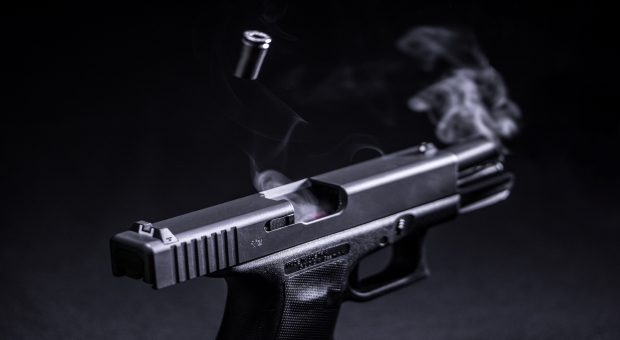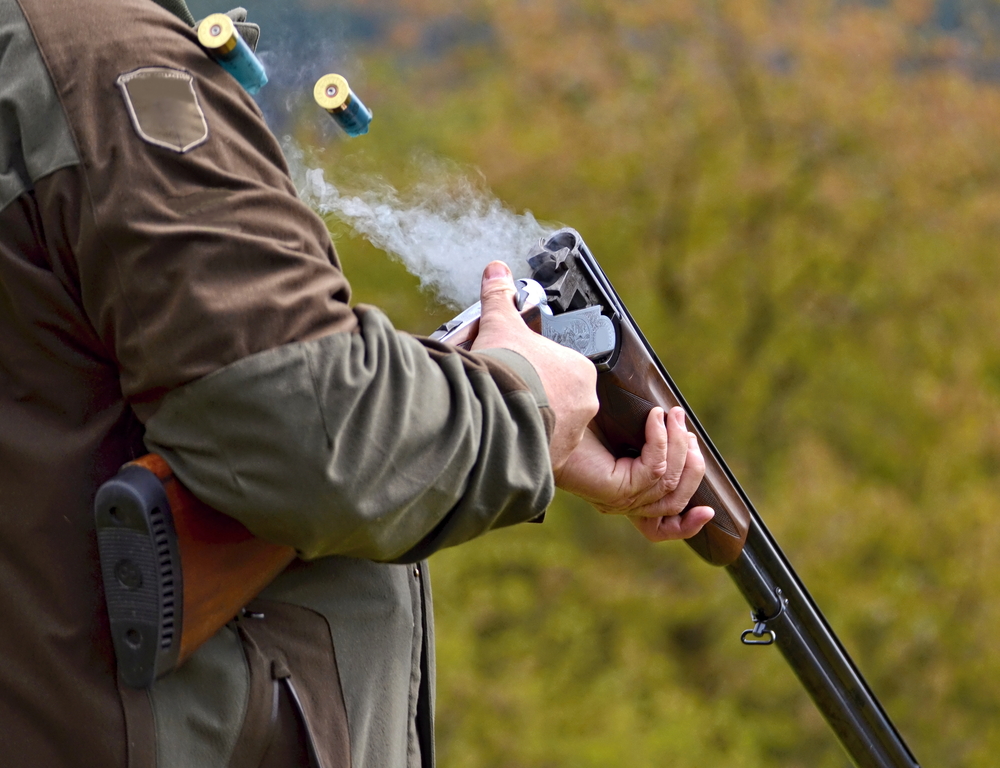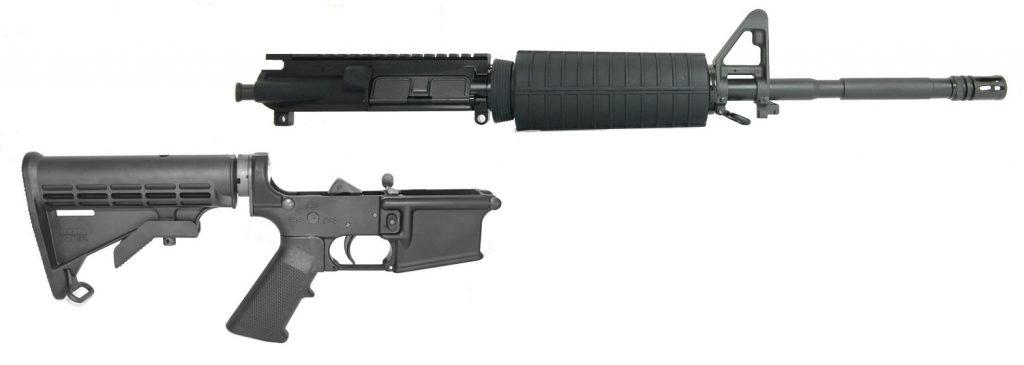[ad_1]
There’s no question that the ability to defend your home and family is an integral part of survival. That primarily means guns, as they are the best weapon available to us today. I started shooting as a child, and I taught all my kids to shoot when they were pretty young. As with most other preppers, we have guns in the home and the ammo we need to use them.
I don’t often talk about guns specifically, although I do talk about self-defense and home defense. The main reason I don’t talk about guns is that so many other people do. I see many articles about firearms, especially what guns are “best” for survival, and I even read a few. But by and large, all I’m seeing is people’s opinions. But I think there’s a need for a serious discussion about guns and why one gun might be better than another.
Please note that I have no intention of telling you what gun you should buy or what gun is the best. That’s your decision to make, and it’s a very personal one. What’s best for one person is rarely best for the next. So, even if you are interested in what I carry, that doesn’t mean you should buy the same. However, I will talk a bit about why one type of gun might be better than another in a given survival situation.
Let’s Start with Pistols
All of the guns we’re concerned about can be broken down into two general categories; pistols and long guns. As a starting point, every team member who is old enough to handle firearms safely should have one of each. In a survival situation, especially a post-disaster world where there is a breakdown of law and order, their pistol should never leave their body unless they are bathing or sleeping.
I’m also a firm believer in carrying concealed and do so every day. We aren’t preppers and survivalists only in the aftermath of a disaster, but every day of our lives. In all the years I’ve carried, I’ve only had to draw my pistol two times, both to stop crimes from happening. And in both cases, the criminal ran once they saw that I was armed.
What Kind of Pistol?
But what sort of pistol is the best to carry? There are two fundamental ways of categorizing pistols; one is that they are either semi-automatic or revolvers; the other is by their caliber. There are proponents of semi-automatic pistols and revolvers, and both have good reasons for their point of view. Revolvers are by far a simpler firearm, so they are less likely to cause a problem in a survival situation and much easier to repair. On the other side of the balance, semi-automatic pistols can hold more rounds and be reloaded considerably faster. While I know one ex-police officer who can reload his revolver as fast as I can refill my semi-auto carry gun, he’s the only one I’ve ever seen do that.
My main reasons for carrying a semi-automatic pistol as my carry gun and my survival gun are those twin benefits of larger capacity and faster reload. Should I ever find myself in a position where I need to use that pistol to keep me alive, I don’t want to be limited by how many shots I can take.
What Pistol Caliber?
But now we get to the bigger question; that of caliber. Let me start by saying that one key element here is comfort. Nobody should carry a larger caliber pistol than they can shoot comfortably. That might mean that a woman would be holding a .380ACP pistol, which I consider sub-optimal as a defensive gun. But if her hands aren’t strong enough to rack the slide of a 9mm, she shouldn’t be carrying it. As a test, if someone can’t shoot a box of ammo through the pistol without help and their hand hurting, they shouldn’t be carrying it.
9mm vs .45ACP
The considerable debate in pistol calibers breaks down to 9mm or .45ACP. I’m a fan of both and have both as active parts of my gun collection. The reason for that is that these two calibers were developed for different things and are useful in different situations.
The .45ACP was developed by famed American gun designer John Browning for the U.S. Army. First manufactured by the Colt Firearms Company, the Colt Model 1911 had a 7+1 round capacity, with a removable magazine. It was developed to replace the .38 Special revolvers, which were the Army’s (and other service’s) standard sidearm. The main reason for this was the Army’s need for a pistol round that could stop the Moro tribesmen of the Philippines, who would attack them high on drugs.
The distinguishing features of the .45ACP bullet are that it has a larger diameter than any other standard pistol round (there is now .50ACP, but there wasn’t when it was developed), and it is extremely blunt. This combination of large surface area and a blunt point means that the bullet is poor at penetration but extremely good at transferring its energy into whatever it hits. It functioned well for its intended purpose of knocking down those Moro tribesmen. It worked so well that Colt Model 1911 was the military sidearm for 72 years.
In contrast to that, the 9mm Parabellum, otherwise known as the 9mm Lugar (for the inventor), or 9mm NATO (as it has been the NATO standard), was designed by a German named Georg Luger. He intended to create a semi-automatic pistol cartridge that would be lethal at 50 meters.
Luther developed a more pointed bullet than any other pistol bullet of the day to accommodate this. Even today, the only bullet with a more pointed profile than the 9mm is the FN 5.7. But that’s a rifle bullet, essentially the same as the 5.56 rifle round in a smaller cartridge.
The sharp point of the 9mm allows it to penetrate much better than any other pistol bullet out there. It is widely considered to be able to penetrate up to 12 inches into a body. This allows the bullet to hit vital organs, even when the target is turned sideways to the shooter, forcing the shooter to shoot through the arm and into the body cavity.
The difference between the two is remarkable in any ballistic test.
- A .45ACP bullet will not penetrate very far into any material, be it Kevlar, wood, flesh, or fiberglass.
- On the other hand, the 9mm will penetrate farther than any other pistol round, including a .357 magnum or .44 magnum, but excluding the aforementioned FN 5.7.
Choosing between the two means choosing knockdown power or penetrating power. When dealing with criminals, who might very well be high on drugs or adrenalin, the .45 is the superior choice.
But when defending yourself from quasi-military forces attacking your home, the 9mm is a superior round, more likely to kill or at least severely incapacitate the attackers. Besides, the 9mm will carry more rounds, which will likely be necessary in a post-disaster world.
The .40ACP
One other caliber I feel a need to mention is the .40ACP. It was a later development intended to try and combine the advantages of the 9mm with the benefits of the .45ACP. The resulting bullet and cartridge look like the .45ACP’s little brother. The bullet geometry is smaller but still the same shape.
This ended up resulting in a bullet that doesn’t penetrate as well as the 9mm and doesn’t carry the knockdown power of the .45ACP. In other words, it is combining the worst of both cartridges rather than the best. Sadly, many of our country’s police forces have adopted this caliber for their issue sidearm, not giving the officers on the street the best possible weapons to defend themselves.
The Long Guns
There is a much larger variety of long guns to choose from than there is of pistols. I’m not just talking models here, but the primary type of firearm. At a minimum, we can include:
- sport rifles
- hunting rifles
- shotguns
- fully-automatic rifles
You can easily find proponents of all of these somewhere in the prepping and survival community.
Before we go any farther, though, let’s talk about how a long gun might be used in a survival situation. As best as I can see it, there are two primary reasons anyone would need a long gun: to defend their home or to hunt for food. So anything we choose has got to fulfill at least one, if not both, of those needs.
Fortunately, we don’t have to limit ourselves to one long gun, although carrying more than one in a bug-out would be a bit too much weight. However, we can get around that problem by having different team members armed in different ways. That would give us the various capabilities that we need.
Long Guns for Home Defense
The number one concern we need to look at using long guns is home defense. That means individuals or groups of attackers coming to break into the home and steal your food and other supplies. We usually picture these individuals as being armed and willing to use violence to get what they want.
Assuming that our assumptions are correct, we’re talking about close-quarters fighting here. While I would do everything possible to keep them from breaching the perimeter of your home and getting in, significantly if they outnumber you, that doesn’t mean taking up a sniper rifle and shooting at them a couple of blocks down the street. Unless they’re shooting at you from there, you have no way of knowing that they’re attacking you.
Even though we’re talking about a time when there will probably be a breakdown of law and order, that doesn’t mean things will stay that way. Most likely, things will return to some semblance of normal at some time or other, and when that happens, there will be those who will want to prosecute anyone who had to defend themselves. So you want to be sure that your actions will meet the legal test of being in self-defense. That means that you only use deadly force when you are under attack or threat of invasion by someone physically close enough to do you bodily harm. So much for sniper rifles or their civilian equivalent, the scoped hunting rifle.
Likewise, fully automatic rifles are unrealistic for defending the home, as they are notorious for the muzzle rising due to recoil. That means that once the first shot has left the muzzle, any others are likely to go up into the air, missing their target. That’s not so much of a problem, but what they hit when they come back down to earth could be very serious indeed.
Taking those two categories of long guns out, we’re left with shotguns and sporting rifles, specifically the various versions of the AR-15. Both are excellent for home defense, although you must be careful with the AR-15, as the bullets can pass right through someone, hitting something beyond.
There are a wide variety of shells available for 12-gauge shotguns, including slugs and less-lethal rounds. This makes the 12-gauge one of the most versatile home defense guns out there. The only thing wrong with it is the limited magazine capacity of most shotguns. This can be solved by either buying one of the newer bullpup shotguns with dual magazines or a tactical shotgun that feeds from a magazine.
In no case is a hunting shotgun good for home defense.
However, even with as good as shotguns are for home defense, I wouldn’t just depend on a shotgun with nothing else as backup. Other than those with removable magazines, reloading would take too long in a firefight. If the fight went that far, it would be better to set the shotgun aside and grab a secondary firearm, like an AR-15.
Long Guns for Hunting
When hunting, the same long guns that anyone uses today are ideal for survival hunting. Whatever your favorite hunting rifle is, plan on using it for survival. As far as a shotgun goes, if yours has a removable plug in the magazine, I’d go ahead and remove it, all the while saving it for reinstallation whenever things go back to normal.
The one problem here is that the rifles and shotguns we use for hunting are not ideal if we end up being attacked while out hunting. Carrying a second long gun is impractical due to the weight. The best thing to do is carry a hunting rifle with replaceable magazines, such as some versions of the Remington 700 or an AR-15 chambered for hunting.
Another critical consideration in hunting is the small game. That will probably be more plentiful than big game. So a good .22LR rifle should be part of everyone’s survival arsenal, either that or a conversion kit for their AR-15.
Of course, this assumes you’re going to be able to go hunting, something I’m not so sure of. There will be many other people out there trying to hunt for food, to the point where the game population will become diminished rapidly. If your survival plans depend on hunting those animals for food, I can only hope you live far enough away from any population centers that you will still be able to find the game. Otherwise, you’ll probably be wasting your time.
But for all of this, you should read Simple Gun Hacks That Will Instantly Double Your Accuracy from Decorated Green Beret!
[ad_2]
Source link
Get more stuff like this
in your inbox
Don't Be Left Unprepared
Thank you for subscribing.
Something went wrong.







